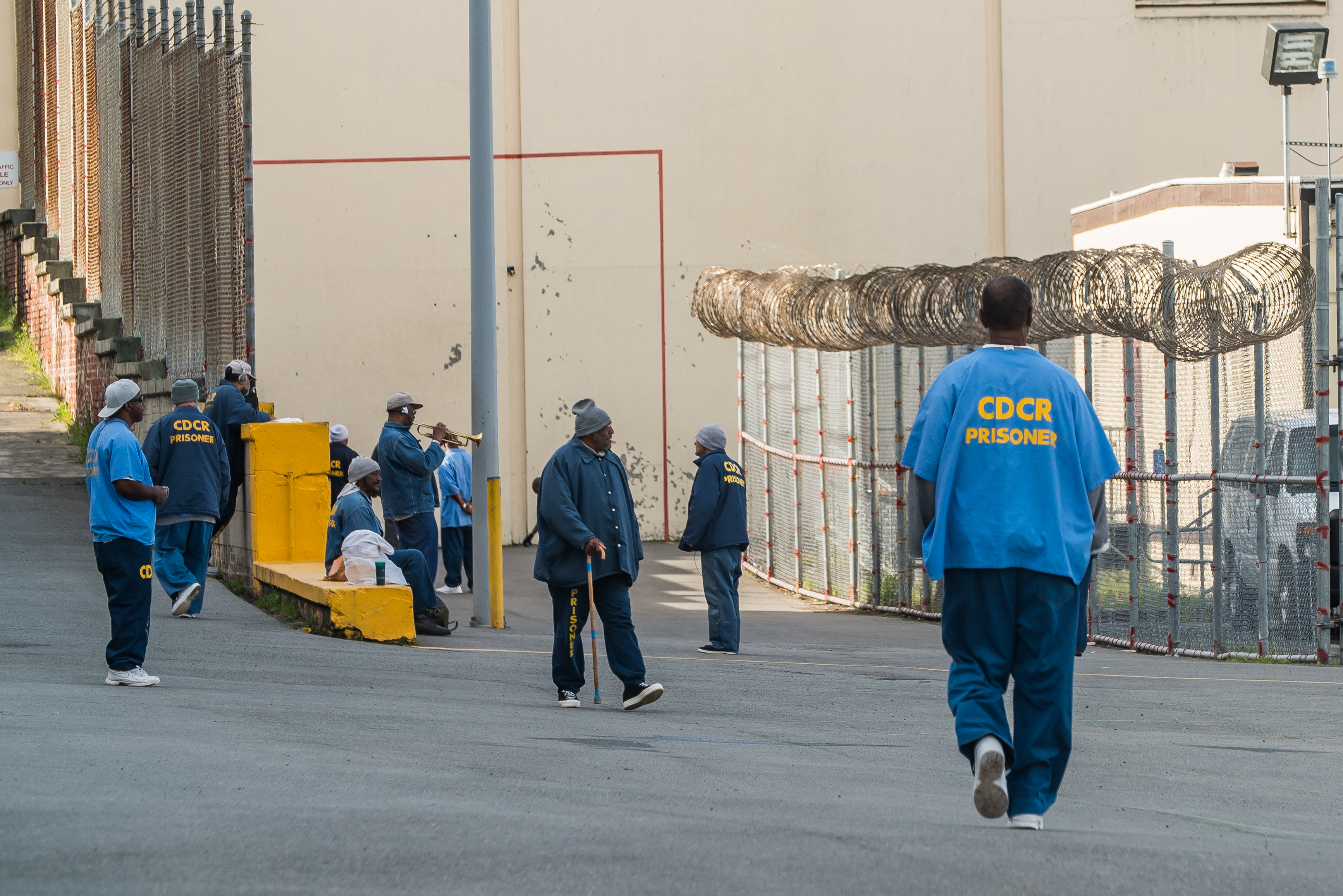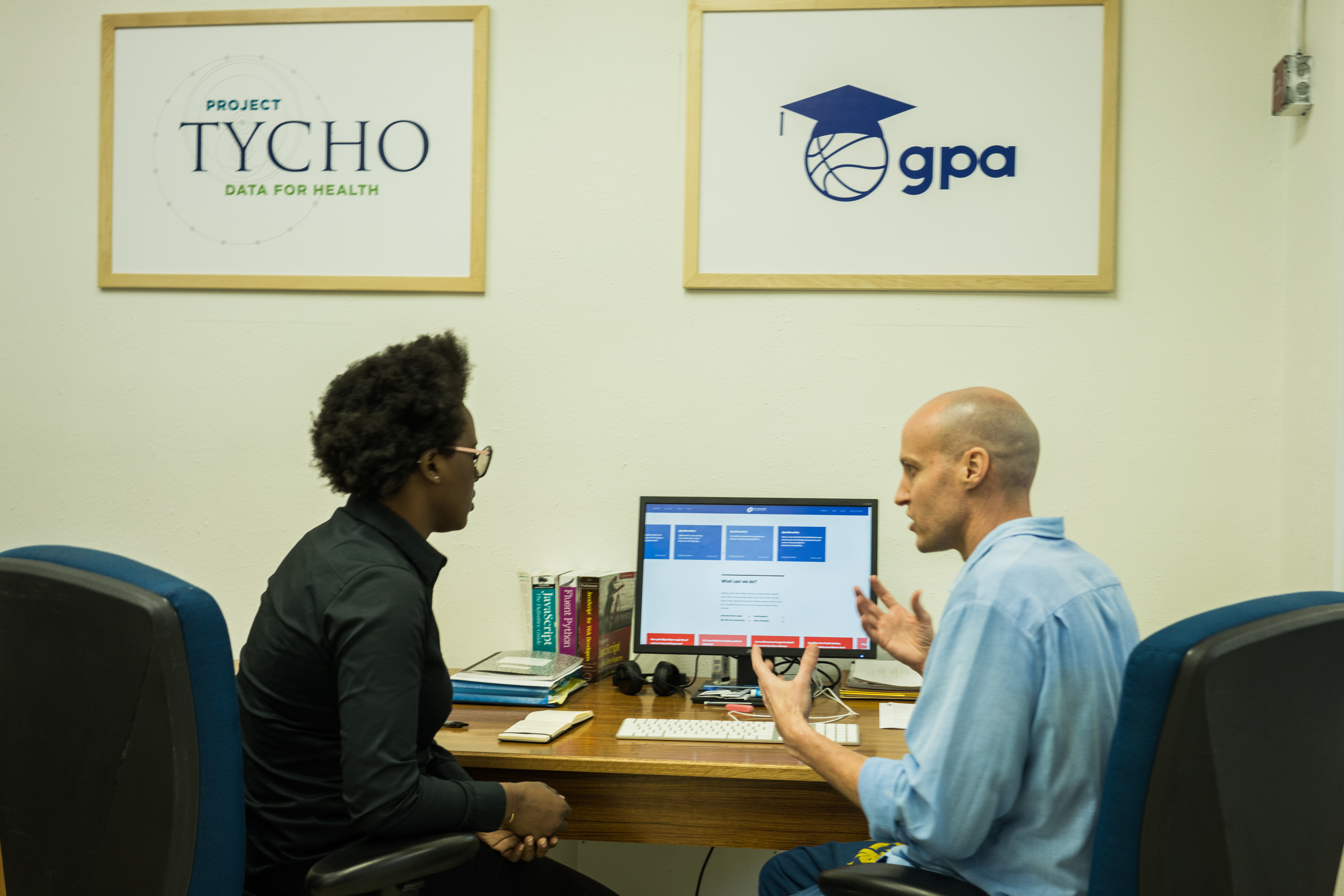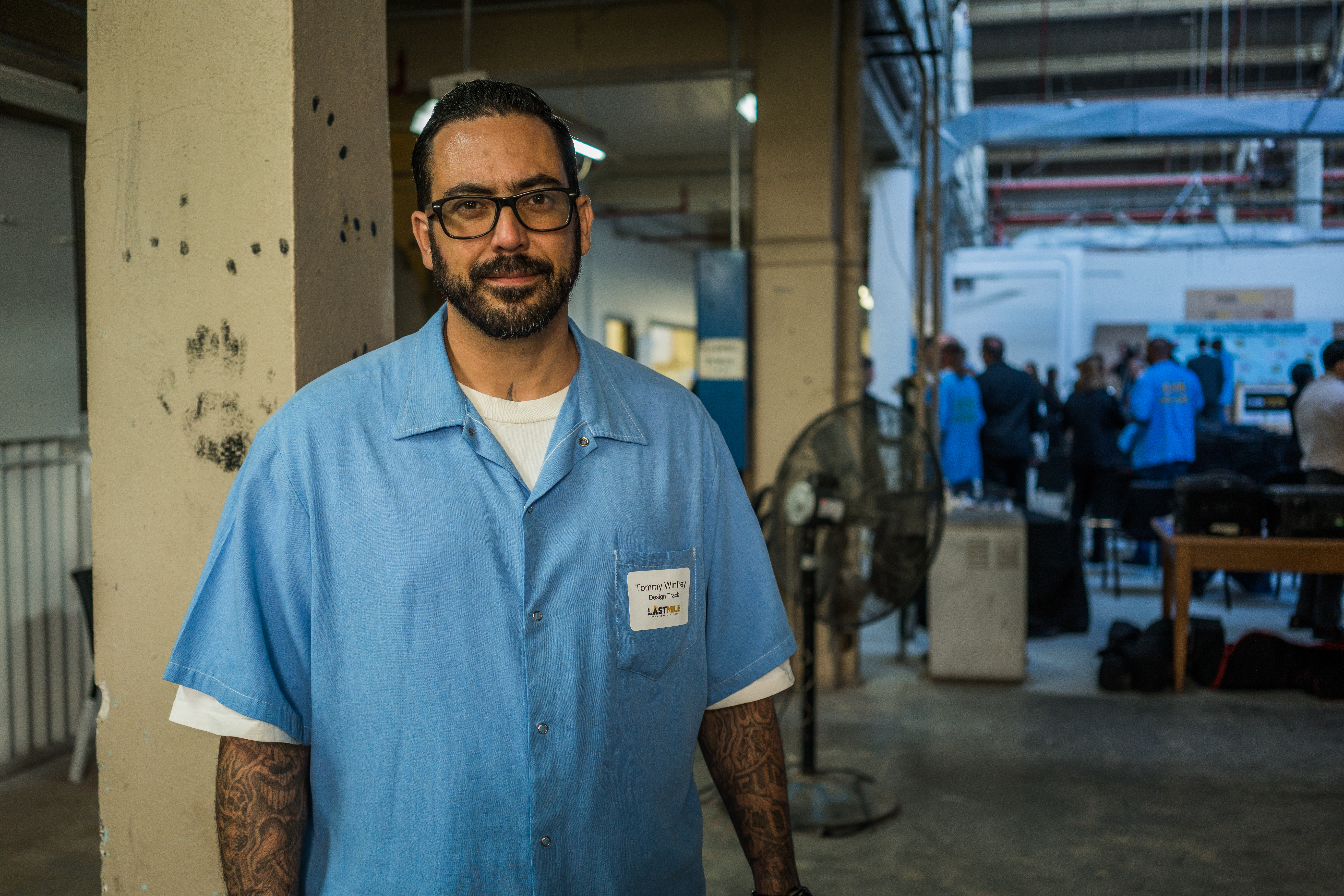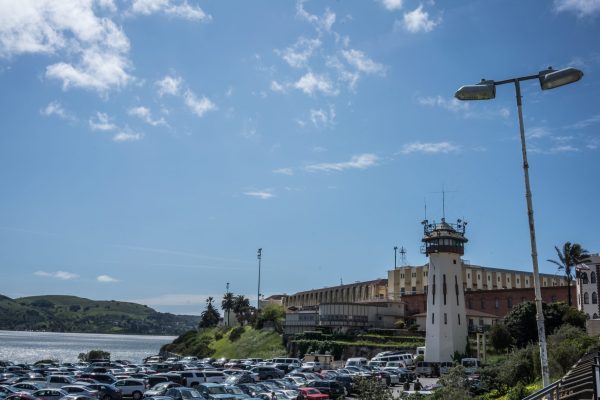North of San Francisco, there’s a European-like fortress along the water that is “home” to over 3,000 prisoners. The surroundings are beautiful, but the tall walls of San Quentin, the oldest prison in California, make it almost impossible to be able to enjoy any of it from the prison yard.
When I first entered the facility, one of the media escorts said heaven was on our right and hell was on the left. To my right was a chapel and places of worship for Muslims, Jews, Christians and Protestants. To my left was the adjustment center, where San Quentin’s more violent criminals are imprisoned. That’s the side closest to the only death row in California.
Down the hill and past the yard — where one prisoner played the trumpet while some played basketball and others jogged — is where The Last Mile’s Code.7370 is situated. What used to be a printing factory is now the headquarters of the most innovative element of San Quentin. It’s where incarcerated people learn entrepreneurial skills, how to code and the elements of web design.

Incarcerated individual plays the trumpet on San Quentin’s yard.
Yesterday, The Last Mile, in partnership with the California Prison Industry Authority and the California Department of Corrections and Rehabilitation, hosted its third-ever graduation and demo day for programmers and designers at San Quentin.
Through two tracks, as well as a design track in Code.7370, incarcerated individuals can learn HTML, JavaScript, CSS, Python, web and logo design, data visualization and user interface/user experience. In total, 18 incarcerated people celebrated the completion of their Code.7370 course load.
“Most of these guys know more than people on the street,” CALPIA Executive Officer Charles Pattillo said. “More than me.”
Shortly after entering the printing factory-turned-coding school, The Last Mile co-founder Chris Redlitz introduced me to Steve Lacerda who has been in prison for 11 years and will get out on parole in three months. Lacerda is part of The Last Mile Works — a joint venture program that works with organizations like Airbnb and the The Coalition for Public Safety to complete projects for them.
Through TLM Works, Lacerda built a website along with a couple of other inmates for CPS. Lacerda and his teammates did this all without access to the internet. When he’s released on parole, Lacerda told me he wants to keep learning about computer programming.

Steve Lacerda walks me through his process for developing the website for CPS.
During the day, several people spoke about the importance of The Last Mile, including Redlitz, TLM alum Kenyatta Leal — who has gone from being a paid intern at Rocketspace to a campus manager to soon a member of the inside sales team — and Sirius XM producer Sway Calloway.
“These people aren’t just prisoners,” Calloway said. “They’re also sons, nephews, lawyers, mechanics and coders. They’re everybody we are outside of the gates.”
Thomas Winfrey, who entered prison about 20 years ago on a life sentence, was the only graduate who completed track two of Code.7370 and the design program yesterday.
Five years ago, he was accepted into the TLM entrepreneurship program. In the past six months, Winfrey took both the coding and design classes simultaneously. That means he was doing double the work as all the other students who had enrolled in one class rather than two.
“Maybe I’m an overachiever or something,” Winfrey told me when I asked what drove him to take both at the same time. “I just really love to build things and I think they go together. They naturally lend themselves to each other.”
While design comes a bit more naturally to Winfrey, he couldn’t say the same for coding.
“I have the natural attraction to design because I’m a visual person,” Winfrey told me. “I create art — I paint, I draw — but I also like to be challenged in the code. It’s definitely a challenge for me.”

Thomas Winfrey completed track two of Code.7370 and the design program.
Although he was sentenced to life, Winfrey’s going to get a chance to pursue his dreams outside of prison. In January, the parole board found him “suitable for release,” likely in mid-May. That means he’ll be able to launch his business, TommyWinfreyArt.com, which is currently being run by his friends outside of prison who, unlike Winfrey, have access to the internet. He’s also looking to get a job in the design industry.
Winfrey said TLM played a huge role in his being able to go to the parole board and convince the panel to release him.
“The Last Mile pushed me,” Winfrey said. “It’s made me make myself visible and has given me the confidence to accept who I am and that’s okay. People aren’t going to be ashamed of me or afraid of me if I actually let them see who I am, and The Last Mile gave me that ability.”
In his hearing, Winfrey talked all about the worst mistakes he’s made in his life, as well as the worst decisions he’s ever made, he told me. He believes he was able to convince them that he was safe to let out. “I let them see me.”
[gallery columns="4" ids="1468445,1468508,1468510,1468512,1468513,1468514,1468515,1468517,1468518,1468519,1468520"]
